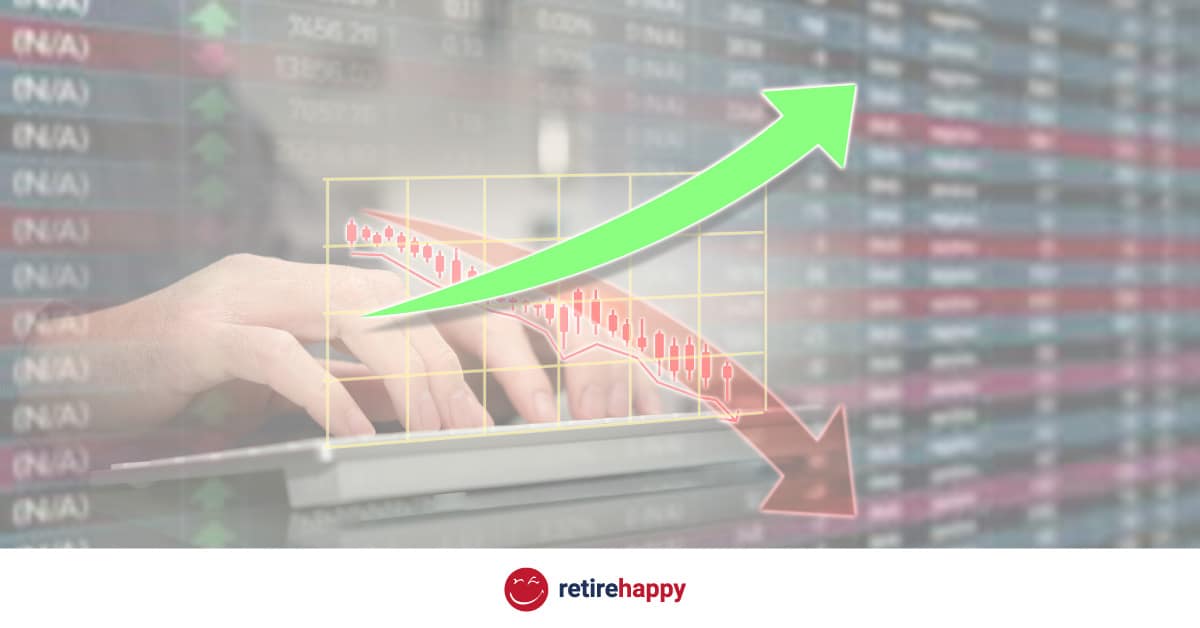Timeless advice for the market volatility in 2022

Markets all around the world have headed in the wrong direction in 2022. Canadian markets are down over 15% this year. The US markets are down over 30%. Everywhere you look, it’s easy to be disappointed with investment results this year. We’ve seen a lot of volatility and accordingly, we wanted to share some of our personal insights and thoughts.
Why are people surprised?
Anyone who has invested in the stock market for any period of time should know that stock markets go down from time to time. In other words, what is happening with the stock market is a normal occurrence. Markets have always gone through cycles and will forever continue to go through cycles. The good news is for every year the market goes down, the market on average spends four times as much time going up. The good news is for every downturn (like the one we are seeing today), the markets always reach new highs in the future. Unfortunately, pullbacks are a necessary evil in stock market investing.
Related article: 5 realities of the stock market
Should people be concerned about what is happening?
Whether people should or should not be concerned, the reality is they will be concerned. Why? Because investing is emotional. It’s human nature to be concerned. Especially when everywhere you turn, you see the bad news. Here’s some recent headlines:
- “Stocks continue to crater and Dow hits a new low”
- “Stocks sink as sell off continues. When will it end?”
- “Dow plunges into a Bear Market”
- “Investors dump US stocks”
How do you think these headlines make people feel? How can you not be concerned? Anyone that thinks to invest is not emotional is crazy.
Should people be doing anything with their money?
I think everyone has the same three basic options:
- SELL. The first is to get out of the market and into cash. If you are surprised at the volatility and you can’t sleep at night, it might be time for you to get out but get out permanently. I guarantee you this won’t be the last time this happens to the market. There’s an old saying that says if it’s too hot in the kitchen, then get out. If you are thinking about getting out for a while but plan to get back in when the market starts to improve, I think that is probably the riskiest strategy out there because market timing is a really tough game to play. You may be better off to take your losses and go find something else that makes you feel better about your portfolio.
- HOLD. The other option is to stay put. For most people, this is probably the right strategy. Just like we have seen markets drop before, we’ve also seen them recover before. That’s never changed. Although there is no guarantee, markets historically recover after severe drops within 6 to 12 months. Typically when big drops happen, most of the drop has already happened. Staying put is easy if you hold good quality investments.
- BUY MORE. Lastly, market drops can sometimes be the best time to buy. Investing in markets is the only business I know where when something goes on sale nobody buys. Remember that logic says you should buy low sell high. Unfortunately for most, emotion causes people to do the opposite. They want to keep their winners and sell their losers (Buy high and sell low). I recognize that buying now is probably one of the hardest things to do but if you really think about it, it makes sense.
Related article: Buy Low, Sell High
At the end of the day, markets do what markets do. You can’t predict it and you can’t control it. If you invest in the markets, you have to accept this reality and realize that over time, you will win. Every market downturn is simply a test of patience. We’ve seen this before so for me, I have not done anything significant with my portfolio except that I continue to buy and invest when I have the money and I continue to Dollar Cost Average into the markets.

Comments
Thanks for your input Jim.
I have always stayed calm with the investing ups and downs although this ‘down” is lasting way to long. I have thought about switching the financial advisor but staying with the very large insurance company that has my funds.
My own thoughts are to stay the course and only take out the money you need to meet your expenses. In that sense, if the stocks are down 15%, the money you take out has a 15% loss. But ONLY the money you take out. The rest is still there. When the markets go up, the rest of my money will go up, too.
I’d like to be as optimistic about a market comeback but we’re in umprecendented times with erratic and incompetent central banks and even now overspending governments causing inflation to rage while at the same time trying to kill the economy. How does this make any sense? And how long will traumatised investors take to return to the market? Not anytime soon I bet. Huge problems that won’t be resolved for a long long time.
Hi Jim,
I have a cannabis stock – Tilray. It’s dropped so much I can’t even entertain selling. I’m wondering what you think the outlook is for this segment.
Thank you
Given this is a retirement website, and many folks may be in “decumulation” stage (drawing down savings/investments to pay for life in retirement), it is important to ensure sufficient liquid assets (cash) are on hand to cover at least 2 years of spending needs while you implement the “Hold” option above and wait for your investments to recover their lost value. This ensures that you are not in a position where you need to sell investments to pay for life – which then actually crystalizes what are now only paper losses within your investment portfolio.
In fact, you should have a bucket (or Pie/Cake as Roger Whitney refers to it) strategy that includes this cash floor, a GIC ladder beyond that and finally riskier longer-term investments (equity) to provide some protection against inflation.